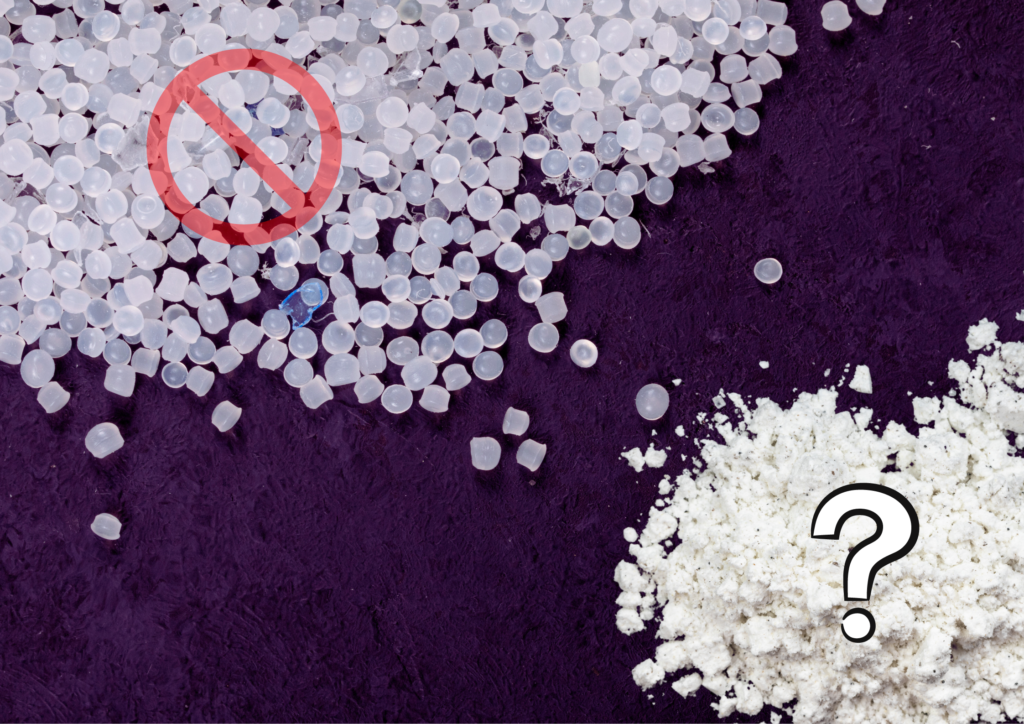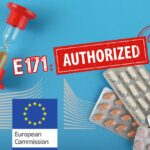
Restriction of manufactured microplastics: nanoplastics in the spotlight
On April 26, 2023, the European Commission’s REACH Committee voted in favor of the European Commission’s proposal to progressively restrict the placing on the market of manufactured microplastics. But what of nanoplastics? In principle, they are covered by this restriction but will however benefit from a “temporary” exemption whose deadline is not specified…
A proposal to restrict manufactured microplastics in all sectors
On April 26, 2023, the European Commission’s REACH Committee voted in favor of the European Commission’s proposal to restrict manufactured micro- and nanoplastics.
This long-awaited restriction proposal1In January 2019, the European Chemicals Agency (ECHA) proposed to restrict certain micro- and nanoplastics intentionally incorporated by manufacturers. It was only on August 30, 2022, that the Commission presented, after a long period of inertia denounced by NGOs, a proposal to restrict intentionally added microplastics. covers intentionally added micro- and nanoplastics in all application areas. In addition to a marketing ban, it also includes information and labeling requirements.
These micro- and nanoplastics are added to a wide range of products for various reasons. They are found in cosmetics, in children’s diapers, in cleaning products, in paints, on sports grounds, in plant protection products, etc. Their release and diffusion in the ecosystems lead to a cascade of harmful effects, still insufficiently evaluated, that are affecting aquatic fauna and other animals (including humans) that feed on them.
This text was globally welcomed by NGOs (Rethink Plastic, ClientEarth, Surfrider, EEB) who have been working on this restriction for years. A week before, 32 NGOs had co-signed an open letter calling for the adoption of the text, while insisting on the need to implement additional measures within Member States to better prevent and reduce emissions of micro- and nanoplastics.
The European Parliament and the Council of the European Union now have a three-month review period, after which the regulation should come into force.
Lack of clarity on nanoplastics
However, it is unclear how nanoplastics are addressed. While the proposed restriction does not set a lower limit for the size of microplastics, and includes all small plastic particles, including nano-plastics, it also provides for a temporary exemption from the regulation for nanoplastics, without specifying a deadline…
This temporary exemption supposedly ensures the application of the text, in a context where existing analytical methods are not sufficient to detect, quantify and identify particles of this size, especially in complex matrices (e.g., nanoplastics from degradation found in lake water).
In fact, this exemption excludes nanoplastics from the scope of the regulation, without specifying any terms and conditions (in terms of timetable in particular). It could encourage companies to continue using nano-plastics and delay efforts to eliminate or substitute them. In the absence of specific regulations, there is no particular pressure to develop innovative techniques to detect nanos… However, recent progress has been made in this field, in particularly for complex samples (taken from sea water, snow, air, sand or agricultural soil)2See Cai, H., Xu, E. G., Du, F., Li, R., Liu, J., & Shi, H. (2021). Analysis of environmental nanoplastics: Progress and challenges. Chemical Engineering Journal, 410, [128208]. https://doi.org/10.1016/j.cej.2020.128208.
In April 2023, the European Commission published a dossier “Nanoplastics: state of knowledge and environmental and human health impacts” in which it reaffirmed the need to include all plastics smaller than 1 µm (micrometer) in the definition of microplastics. According to the authors of the document, the “regulatory response lags behind the rate of release of nanoplastics and their abundance in the environment” even though “the smaller the plastic particles, the more likely they are to cross biological membranes and the more likely they are to permeate organisms“.
This dossier (or “future brief”) concludes that an inclusive categorization where microplastics also includes nanoplastics will avoid leaving a “gaping hole” in the regulation for intentionally added nanoplastics.
This half-hearted restriction is not unexpected, and history shows that this restriction on the inclusion – or not – of nanoplastics has been an important issue, particularly for industrialists:
- ECHA’s first proposal in January 2019 did not exclude nanoplastics from the restriction3Cf: ECHA proposes to restrict intentionally added microplastics, ECHA, January 30, 2019 ; ANNEX XV RESTRICTION REPORT – PROPOSAL FOR A RESTRICTION- intentionally added microplastics, ECHA, January 2019 : “‘Microplastic’ means a material consisting of solid polymercontaining particles, to which additives or other substances may have been added, and where ≥ 1% w/w of particles have (i) all dimensions 1nm ≤ x ≤ 5mm, or (ii), for fibers, a length of 3nm ≤ x ≤ 15mm and length to diameter ratio of >3”.
- In June 2020, following lobbying by industry, ECHA removed nanoplastics from its initial draft restriction.
- Following this decision, NGOs mobilized at the European level (BEE, Customer Earth, Break free from Plastic and Rethink Plastic) published a report asking for the reintegration of nanoplastics in the draft restriction of microplastics as initially proposed by the European Chemicals Agency (ECHA) (restriction on particles smaller than 5 mm, with no lower size limit). The objective is to avoid an “absurd” substitution of banned microplastics by nanoplastics because these are exempted from the restriction being defined.
- The European Commission’s proposal of August 30, 2022, voted by the REACH Committee on April 26, 2023, includes nanoplastics in the definition of microplastics but excludes them de facto with the implementation of a temporary exemption.
A regulation that is not ambitious enough
Although nanoplastics share many characteristics with microplastics, their interactions with their environment with microplastics, their interactions with their environment generate additional specific risks4See in particular The mobility of plastic nanoparticles in aqueous and soil environments: a critical review, ACS ES&T Water, Brewer, A., Dror, I. and Berkowitz, B., 1(1): 48-57, 2020, namely:
- their ability to penetrate more numerous and varied biological barriers
- their capacity to adsorb significant quantities of other pollutants (eco-corona)
- their greater reactivity due to their smaller size
- the fact that they are too small to be disposed of by existing plastic disposal methods.
However, no precautions regarding the increased risks associated with nanoplastics (apart from their temporary exemption from the scope of the regulation…) have been specified.
In addition, the deadlines for the elimination of micro-plastics in cosmetics and sports grounds, set at twelve and eight years respectively, are still disproportionately long and unjustified. In both sectors, proven alternatives exist in Europe, and have even prompted some brands to call for the acceleration of the process of restricting microplastics in cosmetic products.
NGOs have repeatedly pointed out these delays and have therefore asked the authorities to implement additional measures in their respective countries to avoid further pollution.
To be continued…

Our information sheets to go further
Upcoming Nano Agenda

- Scientific conference
- 23rd International conference on Advanced Nanomaterials
- From July 23 to July 25, 2025
- Website: www.advanced-nanomaterials-conference.com

- E-learning program: awareness-raising for personnel who come into contact with nanomaterials during research, formulation, production, maintenance, cleaning, upkeep, etc., as well as safety coordinators or engineers, facility managers, heads of laboratories where nanoparticles are handled.
- Organizers: INSTN Grenoble (CEA)
- On the program:
- 1 – Introduction, definition and characteristics of nanomaterials
- 2 – Toxicity of nanomaterials: the state of knowledge
- 3 – Metrology and characterization of nanomaterials
- 4 – Prevention and protection against nanomaterials in the workplace
- 5 – Quiz: assessment of learning outcomes
- The 2-hour course can be viewed for one month from the date of registration.
- Website: https://instn.cea.fr/…risques-lies-aux-nanomateriaux…

- E-learning program: awareness-raising for personnel who come into contact with nanomaterials during research, formulation, production, maintenance, cleaning, upkeep, etc., as well as safety coordinators or engineers, facility managers, heads of laboratories where nanoparticles are handled.
- Organizers: INSTN Grenoble (CEA)
- On the program:
- 1 – Introduction, definition and characteristics of nanomaterials
- 2 – Toxicity of nanomaterials: the state of knowledge
- 3 – Metrology and characterization of nanomaterials
- 4 – Prevention and protection against nanomaterials in the workplace
- 5 – Quiz: assessment of learning outcomes
- The 2-hour course can be viewed for one month from the date of registration.
- Website: https://instn.cea.fr/…risques-lies-aux-nanomateriaux…
Notes and references
- 1In January 2019, the European Chemicals Agency (ECHA) proposed to restrict certain micro- and nanoplastics intentionally incorporated by manufacturers. It was only on August 30, 2022, that the Commission presented, after a long period of inertia denounced by NGOs, a proposal to restrict intentionally added microplastics.
- 2See Cai, H., Xu, E. G., Du, F., Li, R., Liu, J., & Shi, H. (2021). Analysis of environmental nanoplastics: Progress and challenges. Chemical Engineering Journal, 410, [128208]. https://doi.org/10.1016/j.cej.2020.128208
- 3Cf: ECHA proposes to restrict intentionally added microplastics, ECHA, January 30, 2019 ; ANNEX XV RESTRICTION REPORT – PROPOSAL FOR A RESTRICTION- intentionally added microplastics, ECHA, January 2019 : “‘Microplastic’ means a material consisting of solid polymercontaining particles, to which additives or other substances may have been added, and where ≥ 1% w/w of particles have (i) all dimensions 1nm ≤ x ≤ 5mm, or (ii), for fibers, a length of 3nm ≤ x ≤ 15mm and length to diameter ratio of >3”
- 4See in particular The mobility of plastic nanoparticles in aqueous and soil environments: a critical review, ACS ES&T Water, Brewer, A., Dror, I. and Berkowitz, B., 1(1): 48-57, 2020






